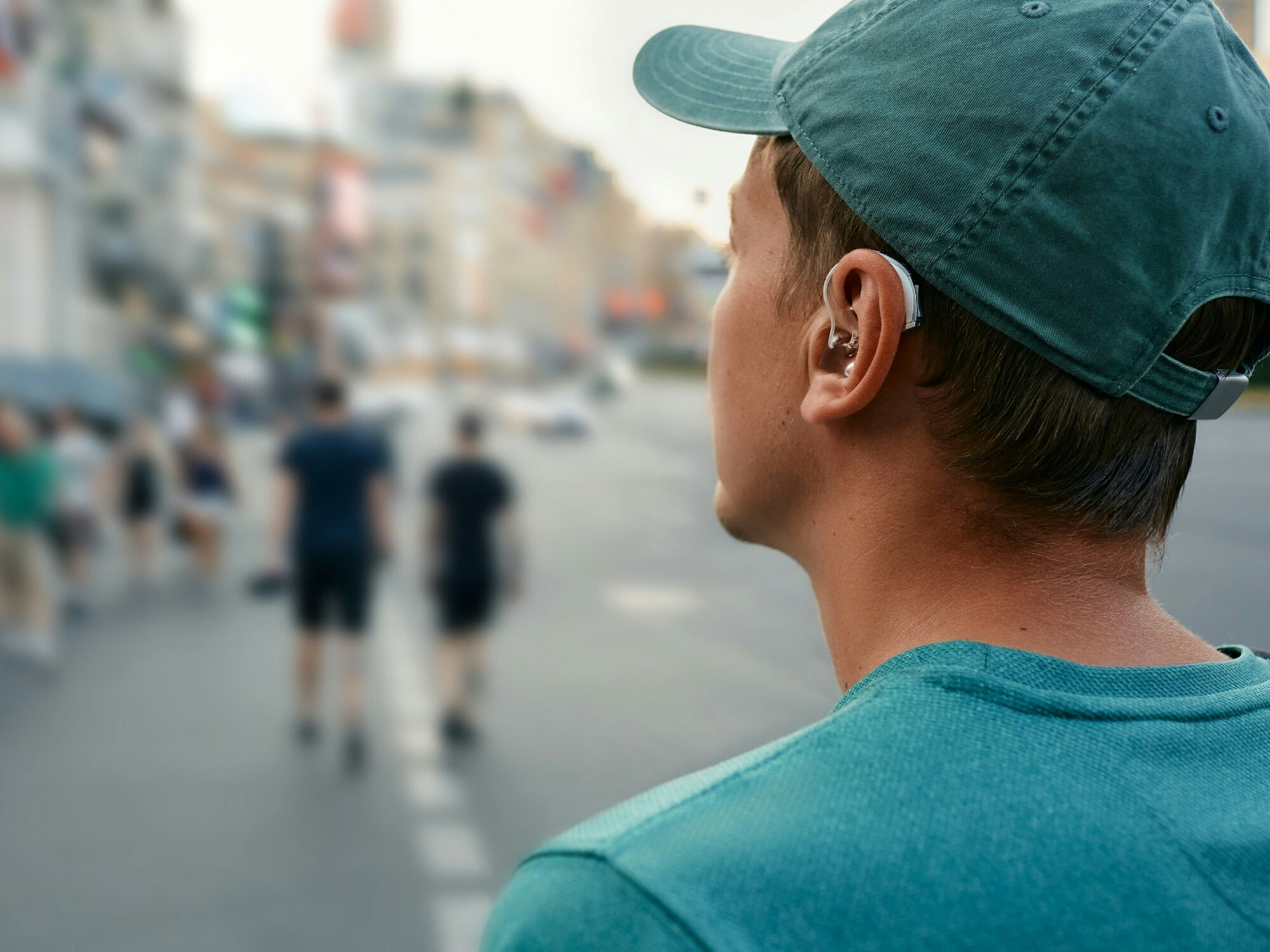What is Hearing Augmentation and where is it used?
Last updated

For people who are deaf or hearing impaired, day-to-day life can be difficult when out and about as you may experience issues accessing facilities that would usually require sounds or audio to navigate.
Key Points
- Hearing augmentation delivers quality audio directly to a listener’s hearing aid, cochlear implant or hand-held hearing loop receiver
- The Australian Building Code dictates the installation of a hearing augmentation system in any public building with in-built audio systems
- Although common in public settings, some public transport options are not designed for hearing impaired commuters
For people who are deaf or hearing impaired, day-to-day life can be difficult when out and about as you may experience issues accessing facilities that would usually require sounds or audio to navigate.
Places that generally require sounds and audio to understand and navigate could include taking public transport, going to a church service, or attending a lecture at university.
This is where assistive listening aids, such as hearing augmentation, provides clear, high quality audio to hearing aid users when they access public spaces that have an in-built audio system.
Hearing augmentation systems can benefit deaf and hearing impaired Australians, although better accessibility in public needs to be improved.
The Building Code of Australia requires the installation of hearing augmentation systems in public buildings or spaces designed for five or more people. So you should see hearing augmentation systems in place in public halls, cinemas, lecture theatres and churches.
It is a beneficial and necessary inclusion to enhance safety for people who are deaf or hearing impaired through telecommunication systems, emergency alarms and warning systems, and public address systems. You can identify when a system is present in a building if the International Deafness Symbol is displayed.
Portable hearing augmentation options can also be available for events.
Common types of hearing augmentation systems
There are several types of hearing augmentation systems, with some more accessible than others.
As a result, depending on the type of system installed, it may not provide support for all who are deaf or hearing impaired.
Hearing loop systems, also known as induction loops, provide clear audio for those with hearing aids. They work with hearing aids and implants that have a T-switch or telecoil setting. There is a physical cable generating a magnetic wireless signal which can be picked up by hearing aids, cochlear implants and hand-held hearing loop receivers.
It is possible for other electromagnetic fields to impact the transmission of audio. Examples include metal tiles, metal cladding, metal beams and even fluorescent lighting. Proper testing of a hearing loop system should avoid any issues prior to installation.
Infrared hearing augmentation systems do not require the use of hearing aids. It is an emitter – receiver system where sound travels via an infrared beam.
A direct, unblocked line of sight is required between the emitter and receiver, which can impact its efficiency in certain spaces.
Similarly, there are frequency module (FM) systems operating in the same way, but work via radio frequencies.
Complete coverage for the hearing impaired
The installation of hearing augmentation systems is necessary for people who are deaf or hearing impaired when there is an inbuilt audio or amplification system. Examples include public announcement systems, telecommunication systems and emergency warnings.
You can expect hearing augmentation to be present in all Class 9b buildings – theatres, churches, schools, sporting facilities and public transport facilities. Public spaces used for social events or gatherings, essentially.
Specific coverage for these hearing augmentation systems are also mandated in the above buildings. Hearing loops must cover 80 percent or more of the room’s floor area, or the space of an outdoor setting.
Infrared systems and FM hearing augmentation systems must cover at least 95 percent. The provision of receivers is also required by the venue host, with a set amount required per person who is present.
For example, a venue with a 500 person capacity requires one receiver for every 25 persons. You can learn more about hearing augmentation requirements through the Federal Government.
Maintaining a large number of receivers is challenging, which is why hearing loop installations are often preferred, as these systems provide simplicity and ease of management.
An induction loop system can also be easily connected to an existing audio system by a licensed professional.
Accessible public transport options
You can expect public transport options, such as trains, buses and trams, to be accessible to all people with a disability, as per the Federal Government’s Transport Accessibility Standards. You can learn more in our article, ‘Planes, trains and automobiles – your transport options‘.
Common accessibility means include ramps, dedicated spaces for wheelchairs and wide entryways, but also hearing augmentation systems for people who are deaf or hearing impaired.
Audio is commonly used for trains, including train station platforms, and trams. However, it is less common on buses, and you may find hearing augmentation is not always present. This can prove challenging for people with a disability in busy settings with background noise.
The Department of Infrastructure, Transport and Vehicles is currently investigating reform that would ensure a hearing loop system provides 80 – 100 percent coverage on public transport so that hearing impaired commuters can hear public announcements in full.
Signage on the public transport should match what you would find on a building with the International Symbol of Deafness presented clearly.
However, this proposed reform is not expected to be released until mid-2023.
Do you believe public transport and public spaces cater for people who are deaf or hearing impaired? Tell us about your experiences below.
Related content
Planes, trains and automobiles – your transport options
What are the types of hidden disabilities
Hearing impairments